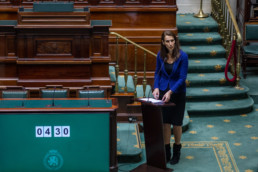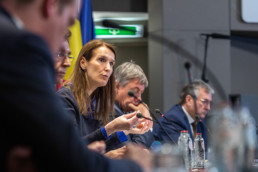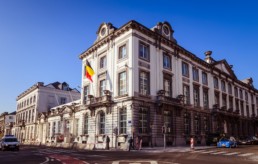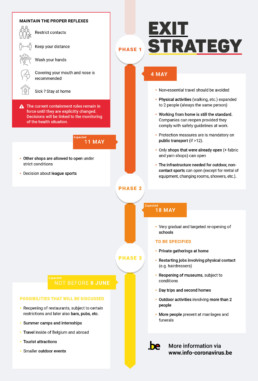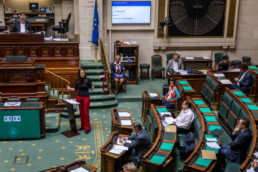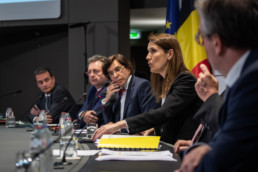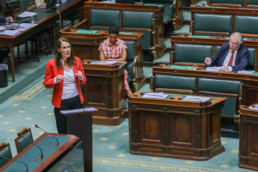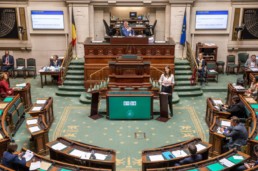Exit Strategy - Phase 1B
https://www.sophiewilmes.be/wp-content/uploads/2020/05/EN_Exit_Strategy_Phase1B.mp4
Answer to parliamentary questions on the National Security Council of 6 May
Check against delivery. Thank you, Mr. President, Let me start with something that is unfortunately becoming a habit, i.e. the analysis of the evolution of epidemiological data. The virus’ reproduction rate continues to drop. That is fairly good news. At the beginning of the week, it was estimated at 0.6, compared to 0.79 10 days ago. The number of new hospital admissions recorded every day also continues to decline. And since last Sunday, less than a third of ICU beds is occupied.…
Phase-out strategy (phase 1b, 11 May): More social contacts and shops allowed to open, subject to conditions
Today, Wednesday 6 May, the National Security Council, extended to include the Ministers-President, met to validate, complete and clarify the new phase of the phase-out strategy, phase 1b, which will start on 11 May. The experts gave this new phase the go-ahead, as a number of criteria are looking well at the moment: the number of hospital admissions per day, the average trend of these hospital admissions which is lower than in…
Exit Strategy - Phase 1A
https://www.sophiewilmes.be/wp-content/uploads/2020/05/EN_Exit_Strategy_Phase1A.mp4
A common and coordinated strategy to provide a means of protection to every citizen
As of 4 May – the start of the phasing out in Belgium – wearing a means of protection covering the mouth and nose from the age of 12 is strongly recommended in public places and compulsory in public transport (decision of the National Security Council on the basis of the GEES expert report). You are required to wear a mask as you enter a train or metro station and when you are waiting at a stop. In schools, pupils over 12 years of age and staff must wear a face mask or a different…
Answer to parliamentary questions on exit strategy
Check against delivery. Thank you, Mr. President, Since the start of the crisis, we have had one priority: to limit and reduce the spread of the virus. Health first. The measures are bearing fruit. We can see that in the reproduction rate of the coronavirus, which now stands at 0.79. This means that, on average, every sick person is infecting less than one other person. The trend of hospital admissions is also flattening, and so we have avoided the main threat: overburdening our…
Coronavirus: Belgium has defined its exit strategy
On the basis of recommendations from the Group of Experts in charge of the Exit Strategy (GEES), the National Security Council met today, Friday 24 April, in the Egmont Palace to determine the exit strategy from the corona crisis. As a reminder, the federal government and the governments of the federated states have taken a series of measures since 12 March to curb the spread of covid-19 in our country. Hopeful indicators, such as the reduction in the number of daily hospital admissions or the…
Response to parliamentary questions on the National Security Council meeting concerning the exit strategy
Check against delivery. Mr Speaker, Members of Parliament, For some days now, there have been encouraging signs from the indicators we are using to track the development of the COVID19 pandemic. We note that the average reproduction number, or R value, for the coronavirus has reached 0.8. In other words, each individual with COVID19 infects on average 0.8 other people. That stands in contrast to an R value of 2 or 3 before the measures to reduce the spread of the virus were…
Response to parliamentary questions on the decisions made by the National Security Council
Check against delivery. Thank you for your questions, which I will come to in a moment. But first, as always, I would like to take this opportunity to thank all our citizens for the huge effort they have been making for a month now. I understand the problems, the sense of isolation and also the frustrations this situation brings with it. However, compliance with the measures is vital to save lives. This effort is not in vain. On the contrary in fact, it is improving the health……

